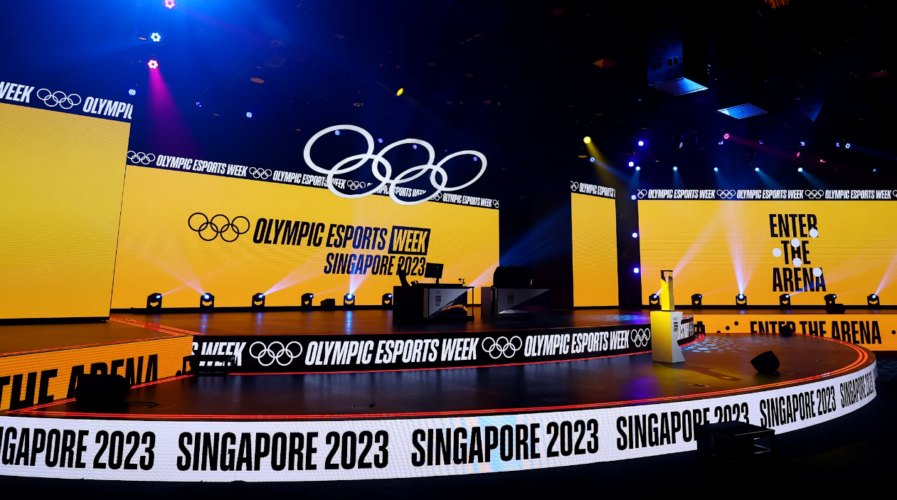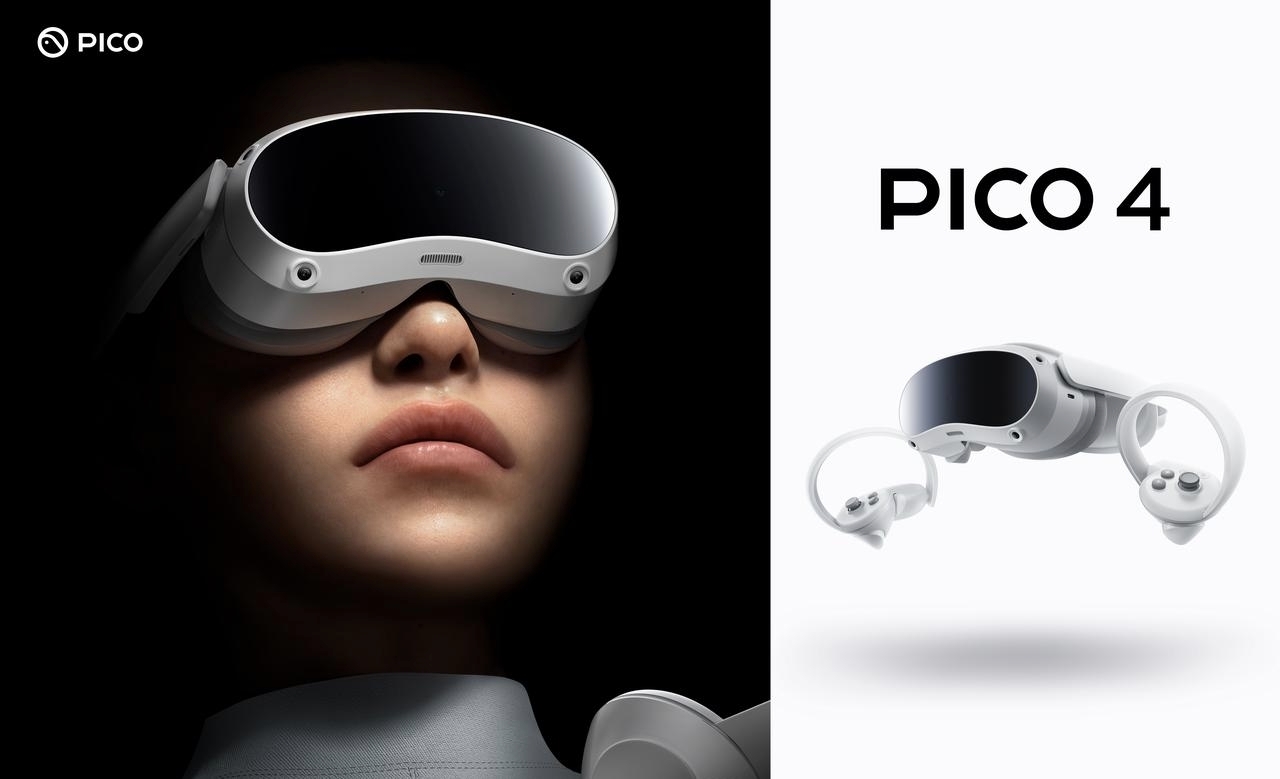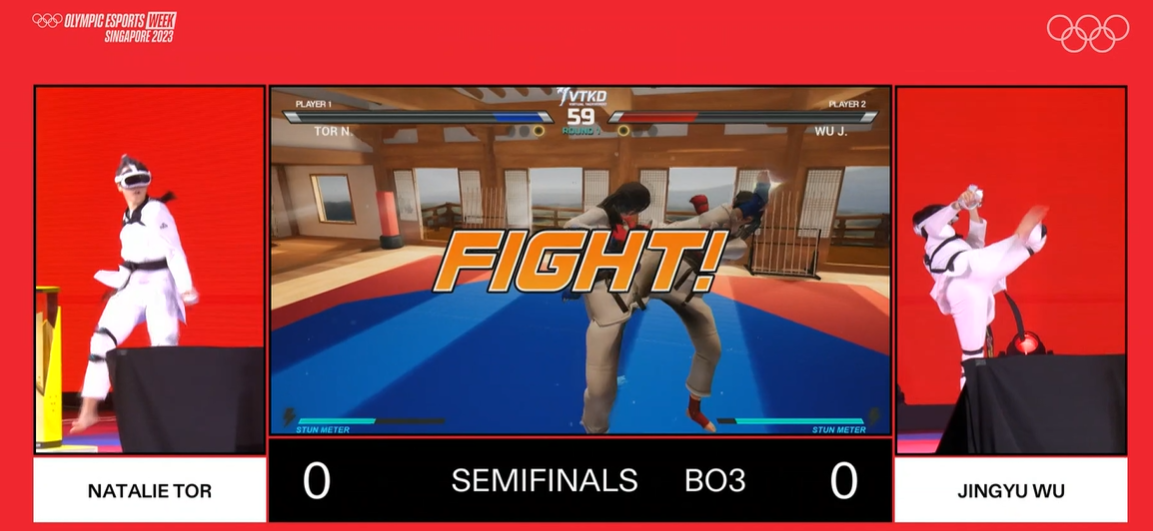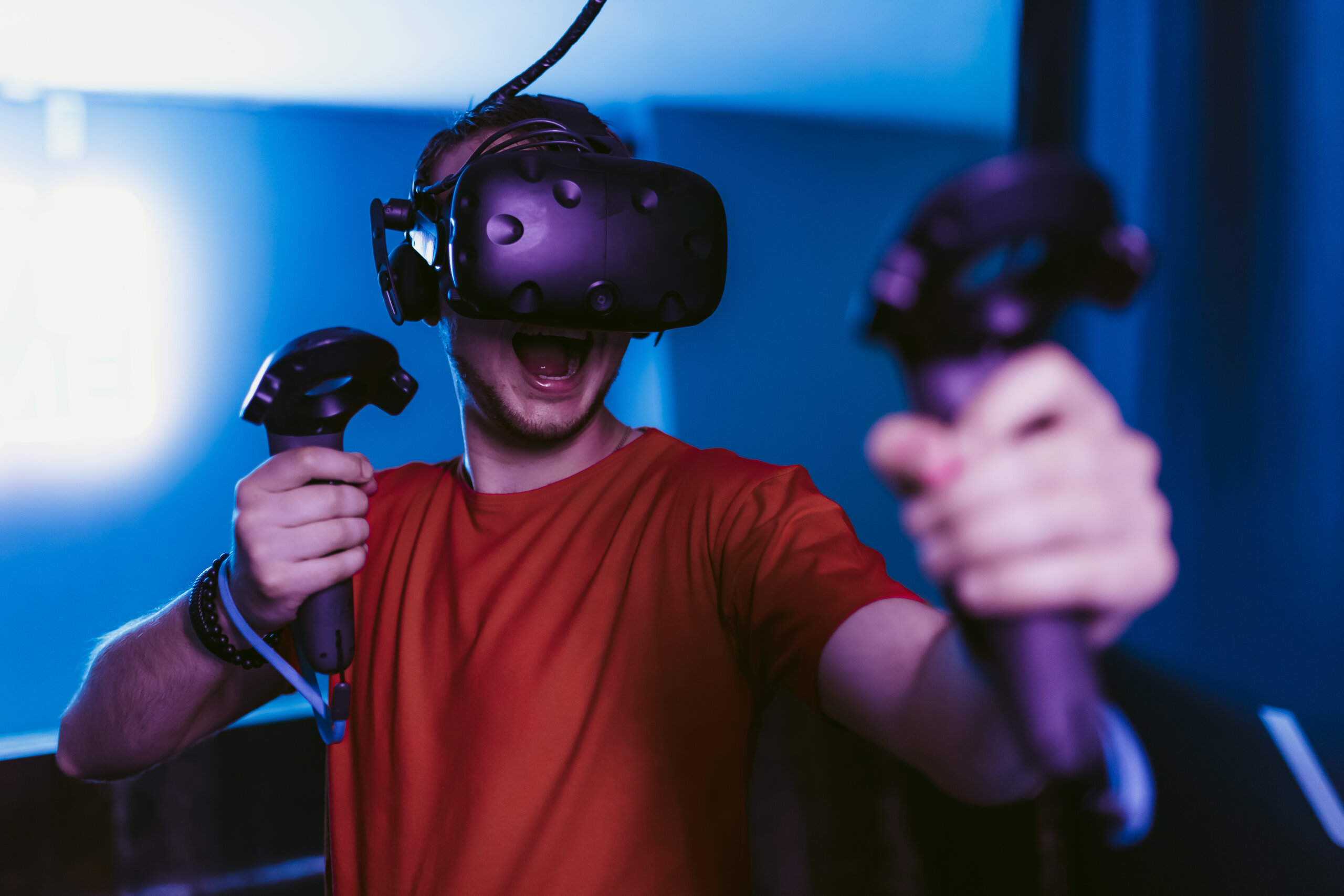
The first ever Esports Olympics being held at Singapore. (Source Olympics)
Everything you need to know about the inaugural Esports Olympics
|
Getting your Trinity Audio player ready... |
- Singapore hosted the first Olympic Esports Week, fostering esports growth.
- The main virtual taekwondo competition will use the PICO 4 VR headset.
The evolution of the gaming industry has been nothing short of extraordinary, breaking barriers and soaring to unprecedented heights. Evidence of this remarkable progress is the recognition of gaming as an Olympic event. Recently, Singapore became the host of the first-ever Olympic Esports Week (OEW), a decisive move supporting the growth of esports within the Olympic Movement and establishing a connection with the thriving gaming community.
At the crux of OEW is the enthralling Olympic Esports Series (OES) finals, which stood as the apex of this year’s event.
What is esports?
For those new to the term, esports signifies professional competitive video gaming. It comprises proficient players or teams vying against each other in structured tournaments with substantial cash rewards. Much like traditional sports, esports attracts a dedicated and zealous fanbase, with viewership stretching to millions worldwide through live viewing or streaming platforms.
A CNBC report highlights that Southeast Asia is witnessing a fast-paced escalation in the esports market, with gamers forming 82% of the urban online population in the region, as per the gaming research firm Newzoo.
Already well-acquainted with esports competitions, Singapore has embarked on significant initiatives to cultivate its ecosystem. The inception of the Singapore Games Association demonstrates the country’s dedication to this domain. The Singapore Tourism Board acknowledges the potential for Singapore to rise as a top-notch destination for esports enthusiasts worldwide, as reported by CNA.
Olympic Esports week: Unveiling the games
International federations cherry-picked ten games for the Olympic Esports Week to stand for its respective sports in the OES. Since March, players have been taking part in qualifying events for these various games.
In Singapore, the finalists of the Olympic Esports will spar for the Olympic Esports Series Winners title, with the chess competition also bestowing the inaugural Olympic Esports Series chess master title.
The official sports and games featuring in the Olympic Esports Series embrace Tic Tac Bow (archery), WBSC eBASEBALL: POWER PROS (baseball), Chess.com (chess), Zwift (cycling), Just Dance (dance), Gran Turismo (motorsport), Virtual Regatta (sailing), Fortnite (shooting), Virtual Taekwondo (Taekwondo), and Tennis Clash (tennis).
Questions might arise about how an activity like Taekwondo can be transitioned into esports, especially in a virtual setting. PICO, the Official VR Headset Partner for the pioneering OEW, introduces revolutionary technology to tackle this hurdle. The collaboration incorporates Singapore’s Refract Technologies’ AXIS, a proprietary real-time full-body motion tracking system, with the PICO 4 VR headset. This innovation enables a VR adaptation of the traditional Korean martial art, Virtual Taekwondo, which aims to fascinate both participants and spectators, underscoring the vast potential of VR in sports.

PICO 4 is the sponsored VR headset at the Esports Olympics. (Source – PICO)
Refract, partnering with World Taekwondo, created Virtual Taekwondo as a novel game that manifests the might of VR. To enrich the viewing experience, PICO will present the Olympic Esports Week programming through its PICO Video app, allowing viewers to relish the action at their convenience.
This alliance aligns perfectly with the event’s “gamifying sports” objective and supplements PICO’s VR solutions across different arenas, including sports, videos, entertainment, education, healthcare, and corporate training. With features such as sweat-resistant face coverings, a lightweight framework, and support for full-body tracking, PICO’s VR headset is redefining what virtual reality can contribute.
Technical factors shaping VR technology at esports events
The technical framework behind the technology needs to be immensely advanced. When VR headsets are incorporated into esports, several technical aspects need to be considered:
Performance and latency
Performance and latency are cardinal factors in esports and gaming, particularly when it comes to the use of VR headsets. Superior hardware performance and minimal latency are necessary for a smooth, immersive gaming experience.
Performance indicates the hardware’s prowess, including processors, graphic cards, and memory. Robust hardware ensures the virtual environment is depicted promptly and accurately, resulting in a seamless gameplay experience. In esports, where time-sensitive decisions and precise movements are essential, fluid performance permits players to respond quickly and compete at their optimum levels.
On the other hand, latency points to the delay between a player’s physical actions and the corresponding visual feedback in the virtual environment. Minimal latency is indispensable in VR gaming to create a seamless and immersive experience. Any discernible delay between a player’s actions and the virtual response can disrupt the sense of immersion. Even a minor latency can drastically impact a player’s performance in high-speed esports games. Low latency guarantees that player movements and actions are accurately and immediately mirrored in the virtual world, facilitating precise and responsive gameplay.
The blend of superior performance hardware and low latency is vital for players to excel in competitive esports. It allows for rapid reactions, accurate movements, and precise interactions with the virtual environment. This degree of performance and responsiveness enhances the overall gaming experience and ensures fair competition, giving all players equal chances to exhibit their skills.
In VR esports, where players physically interact with the virtual world, performance and low latency take on even greater importance. Immediate feedback is required for players to perceive and respond to their environment accurately. Whether it’s virtual sports or combat simulations, performance and low latency are essential for players to fully immerse themselves in the virtual world and exhibit their skills to the maximum extent.
Watch the video below on virtual Taekwondo in action:
Comfort and ergonomics
Comfort is paramount, particularly during long gaming sessions in esports. The VR headset should be lightweight, well-designed, and comfortable to wear. Adjustable head straps, cushioning, and proper weight distribution can mitigate discomfort and strain on the player’s head and face. Adequate ventilation is also vital to prevent excessive heat accumulation during intense gameplay, ensuring players a comfortable and enjoyable experience.
Tracking and motion controls
Tracking and motion controls are critical to esports and gaming, especially in VR experiences. They facilitate precise tracking of player movements and accurate replication of those movements within the virtual environment, enhancing gameplay and immersion.
Accurate movement representation is achieved through tracking sensors in VR headsets, ensuring that a player’s real-world movements are accurately reflected in the virtual environment. This enhances immersion and makes players feel more connected to the virtual world.
Motion controls enable players to interact with the virtual environment with high accuracy. They allow seamless and natural interaction, whether grabbing objects, aiming weapons, or executing complex maneuvers. These precise motion controls enhance gameplay interaction and enable players to showcase their skills in competitive esports.
In esports, where instantaneous reactions and precise movements are crucial, accurate tracking and motion controls provide players with a competitive edge. They enable rapid and accurate aiming, quick navigation through virtual spaces, and exact execution of actions. Players with superior tracking and motion control abilities can react faster, make precise maneuvers, and gain an edge over their competitors.
Tracking and motion controls also incorporate a physical element to the gaming experience, heightening the immersion. Players can physically move, dodge virtual obstacles, and perform gestures that translate into the virtual world. This physicality crafts a more engaging and immersive experience, resonating with the immersive nature of esports and enhancing the appeal to spectators.
Accurate tracking and motion controls also contribute to intuitive gameplay. Players can rely on their real-world instincts and movements to interact within the virtual environment, eliminating the need for complex button combinations or controls. This intuitive gameplay enables players to focus on strategy and skill, elevating the competitive essence of esports.

Virtual Taekwondo in action at the Esports Olympics 2023. (Source – Olympics)
Connectivity and compatibility
Connectivity and compatibility are pivotal in esports and gaming, especially when employing VR headsets. Seamless integration and compatibility ensure a smooth and efficient gaming experience for players and organizers.
Compatibility guarantees that VR headsets are compatible with esports competitions’ gaming platforms or systems. This ensures that the VR headset can effortlessly connect to the gaming platform without technical constraints or compatibility issues. It provides a standardized experience across all players, fostering a level playing field in competitive esports.
Connectivity options, like USB, HDMI, DisplayPort, or wireless connections, offer flexibility in connecting the VR headset to the gaming system. Versatile connectivity options enable easy integration into different gaming setups, be it a wired connection to a gaming PC or a wireless connection to a gaming console. This versatility offers convenience and adaptability, enabling players to use the VR headset seamlessly with their preferred gaming setup.
Effortless integration of VR headsets simplifies the setup process and reduces technical challenges for organizers. It ensures that the VR headset seamlessly integrates into the overall infrastructure of the esports event, including audio, video, and streaming systems. This facilitates the capture, broadcast, and sharing of VR gameplay with viewers and spectators without disruptions or compatibility issues.

Connectivity plays a crucial role at Esports events. (Source – Shutterstock)
In multiplayer esports games, connectivity and compatibility facilitate seamless multiplayer experiences. VR headsets should support multiplayer functionalities, allowing players to connect and interact with each other in the virtual environment. Robust networking capabilities ensure smooth communication and synchronization between players, promoting competitive gameplay and team coordination.
Moreover, well-established connectivity and compatibility streamline esports events’ operation and support processes. Organizers can simplify equipment setup, troubleshooting, and maintenance, minimizing disruptions during competitions. Technical support teams can efficiently address issues, ensuring smooth gameplay and minimizing downtime.
Maintenance and support
In the fast-paced realm of esports events, reliable and robust VR headsets are essential. Consider the reliability and durability of the chosen VR headset, as it will likely be subjected to frequent and intensive usage. Having access to technical support and maintenance services is vital in the event of any issues that may arise during an esports event. Ensure that the VR headset manufacturer or supplier offers prompt and responsive support to address technical difficulties and keep the equipment running seamlessly throughout the competition.
By thoroughly considering these technical aspects, esports players and organizers can select VR headsets that deliver peak performance, comfort, and functionality, enhancing the overall esports experience for both participants and viewers.
READ MORE
- Safer Automation: How Sophic and Firmus Succeeded in Malaysia with MDEC’s Support
- Privilege granted, not gained: Intelligent authorization for enhanced infrastructure productivity
- Low-Code produces the Proof-of-Possibilities
- New Wearables Enable Staff to Work Faster and Safer
- Experts weigh in on Oracle’s departure from adland


